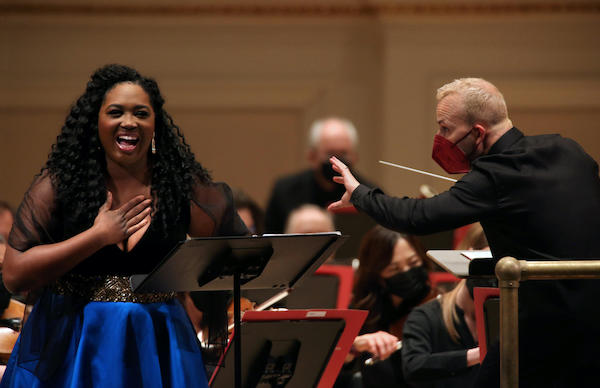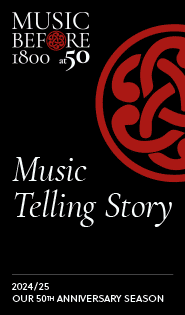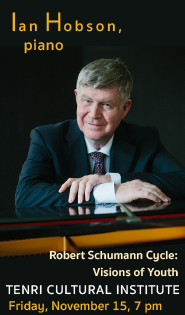Philadelphia Orchestra serves up American music from Barber to Coleman

Yannick Nézet-Séguin and the Philadelphia Orchestra returned to Carnegie Hall for their first New York concert of 2022 with a program of music by American composers. The four works couldn’t have been more different, but all boasted brilliant orchestrations and melodies galore, which provided a golden opportunity to just sit back and enjoy the glorious sound of the Fabulous Philadelphians.
Nézet-Séguin conducted the Metropolitan Opera premiere of Matthew Aucoin’s Eurydice in November. The opera received mostly favorable reviews, but a near-universal complaint was that the singers were sometimes buried by Aucoin’s massive orchestra. That’s not a problem in the composer’s orchestral retooling of the score entitled the Eurydice Suite, heard in its New York premiere.
Here, Nézet-Séguin could let it rip and he and the orchestra did just that Tuesday night. Aucoin scored the suite for large orchestra and a massive percussion section. You don’t put that many musicians on stage without expecting them to make some noise and Nézet-Séguin and his orchestra rose to the occasion. Volume, however, is not the raison d’être of either the opera or the suite, and it was not one long blast fest. There are also stunning, subtle passages, perhaps none more beautiful and eloquent than the clarinet solo which captures Orfeo lamenting the loss of Eurydice.
Few works establish a time and place so instantly and effectively as Samuel Barber’s Knoxville: Summer of 1915, a setting of James Agee’s poem of the same name. The music and words combine to evoke summer evenings of a bygone era when life went at a slower pace and family was near and “good to me.” While the work is unabashedly sentimental, it is also poignant and authentic.
Soprano Angel Blue relived all of those happy memories through the wide eyes of an exuberant child. Her ability to interject infectious delight into mundane descriptions of the ordinary drew the listener into the moment. She was in glorious voice, capturing both the work’s intimacy and its moments of near operatic grandeur. The ending was as close to perfection as one can get with Blue spinning out soft, luminous sound above shimmering string playing from the orchestra.
By the age of 14, Valerie Coleman had composed three symphonies and was well on her way to becoming an accomplished flutist. She has performed as a flute soloist with major symphonies throughout America and founded the quintet Imani Winds to champion non-European composers of contemporary music.
This Is Not a Small Voice, a work for soprano and orchestra, is Coleman’s setting of a poem by Philadelphia poet Sonia Sanchez. The words and the music united in celebrating the strength, resilience and genius of black individuals and communities. It’s a big, bold work with strings and harp yield to a joyous free-for-all of brass and percussion. Above it all are soaring vocal lines that were seemingly tailor-made for Blue’s soprano. She brought the same ebullience and ravishing tone to Coleman’s work that she had lavished on the Barber, albeit on a much grander scale.
There are many forgotten composers, but Florence Price is one of the lucky ones to be rediscovered. She was the first African-American woman to have her music played by a major U.S. orchestra—her Symphony No. 1 premiered by the Chicago Symphony Orchestra under Frederick Stock. That work also won first prize in the 1932 Wanamaker Foundation Awards competition— thereby making a Philadelphia connection, with the home to Wanamaker’s (now Macy’s) department store. A prolific composer, Price composed more than 300 works.
In her Symphony No. 1, Price showed herself to be a child of her times. The first moment undoubtedly evokes Dvorák’s “New World” Symphony, but also shows the influence of her teacher George Chadwick, Charles Wakefield Cadman and other composers of the era. The music sounds most like early America in the third movement, where Price incorporated a Juba Dance, an African-American dance that includes stomping and slapping, into the musical fabric.
When Price latched onto an idea, however, she could drive it home. She squeezed every possible variation out of the hymn-like tune played by the brass in the second moment; there is no doubting its beauty and emotional pull, but shortening it by five minutes or so would have left you wanting more, rather than wondering if it would ever end.
The symphony, however, is a celebration of orchestral color and is nothing, if not exciting. Plus any work that showcases The Philadelphia Orchestra’s wonderful brass section and provides so much enjoyment is a welcome addition to the repertoire in and of itself.
The Philadelphia Orchestra performs Beethoven’s Symphonies Nos. 1 and 9 and the world premiere of Gabriela Lena Frank’s Pachamama Meets an Ode February 21 at Carnegie Hall. carnegiehall.org

